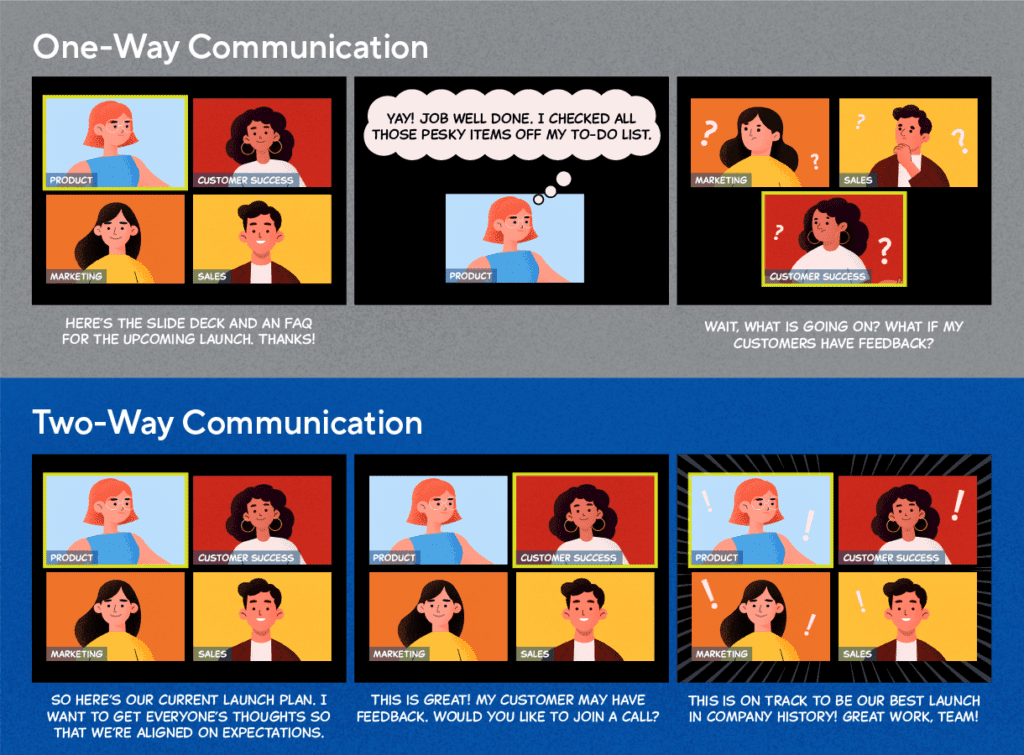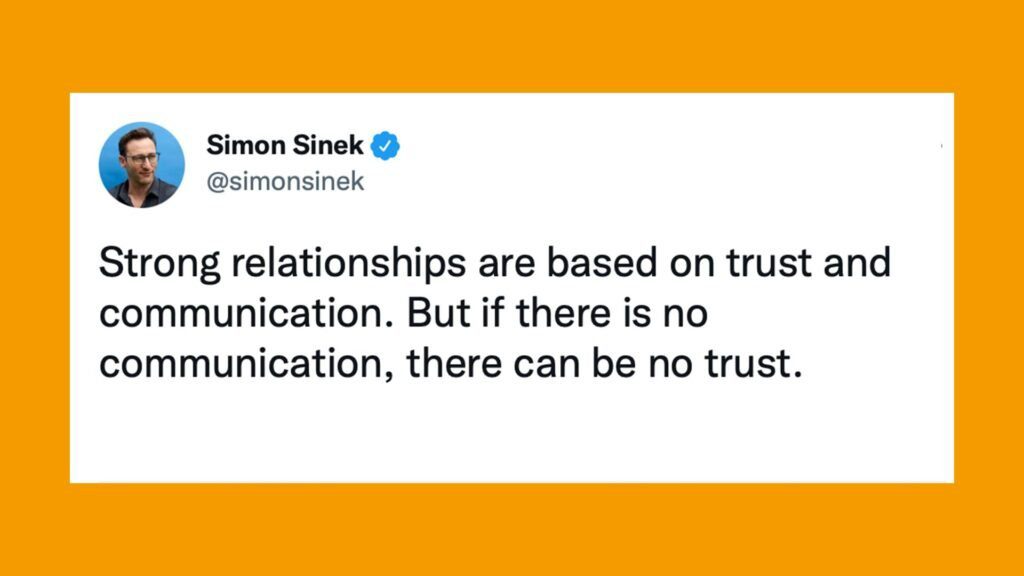Launching a product is not for the faint of heart. So many things, both large and small, can go wrong. In 1985 Coca-Cola canceled New Coke because the product team didn’t confirm that Coca-Cola drinkers would accept a change to their favorite soft drink. Samsung had to recall its Note 7 smartphones because they were exploding. And Google Glass suffered from privacy concerns, bugs, low battery life, bans from public spaces, and an inability to live up to the hype all stymied public adoption of the technology.
Thankfully, few product launches fail in such spectacular fashion as those examples.
More often than not, product launches simply fall flat with the market, and often lack true product-market fit. In my experience in working with product teams, one of the most common reasons for lackluster product launches is ineffective communication throughout the launch process. And I’m not talking about a lack of emails, Slack messages, or meetings. We can all agree that there usually is plenty of communication happening at any given time—especially in a remote work environment.
If it’s not a lack of words, what makes communication and organization ineffective during a product launch? More often than not, it’s a lack of listening and intent where cross-functional teams talk at each other rather than collaborating together to achieve an outcome.
Is Your Product Launch Cross-Functional Team a Track and Field Team, or a Bobsled Team?
Right now, many product folks are running launches like they’re a track and field team in the Olympics. Every department has a separate job; they’re a sprinter, a long jumper, or pole vaulter. The pole vaulter can’t tell the long jumper how to jump farther, and the sprinter is solely focused on their run, so they can’t even help another runner participating in hurdles. They’re all participating in separate events. And while they’re all contributing to the total medal count (Cue: USA chant!), the athletes aren’t actually working together.
So, while individual medals sound great, it doesn’t quite work out as well when it comes to product launches. And that’s because product launches are a team sport.
What cross-functional teams should strive to be like in product launches is a bobsled team.
In this scenario, everyone is doing their job in sync with one another, and it directly impacts the shared outcome—a successful product launch. And there’s no better feeling than when everyone is doing their best. That’s how you get Cool Runnings!
If you’re ready for your next product launch to run as smooth as a bobsled on an Olympic ice track, the key is two-way communication. I’ll explain what I mean in this post when I say that product launch communication needs to be a two-way street. I’ll also give you a couple of suggestions for making it happen with your team.
Transforming Your Product Launch Communication Into a Two-Way Street
First, let me start by breaking down the difference between what I have deemed one-way and two-way street communication.
One-way communication is like building a baseball field in the middle of a cornfield in Kansas and expecting people to show up (are you tired of sports movie references yet?). Kevin Costner clearly made it work, but the odds of success in the real world are extremely low.
In this case, product folks tell other stakeholders what they are doing, why, and when. When the stakeholders get confused, the solution is to repeat the information. On Zoom meetings, in documents, and on a roadmap.
The one-way communication is often mistaken for alignment, but in reality, all you have done is pushed information and hope the right things happen.
In contrast, two-way street communication is about presenting your launch plans and asking for feedback. It relies on the product person understanding what the stakeholders are (or aren’t) excited about and what they will need to be able to do their jobs well. It’s also about making sure they understand what they need to do to do their jobs well. The most significant benefit of two-way communication is that everyone becomes invested in the outcome because they feel like a key part of the launch process rather than a passive player in the product person’s plan.
To drive home the difference between one-way and two-way street communication, we created this helpful comic:

Two-way communication ties back to the idea that product folks need to focus on building relationships with key stakeholders. And as Simon Sinek shared, “Strong relationships are based on trust and communication. But if there is no communication, there can be no trust.”

Source: LinkedIn
When you focus on two-way communication, you are instilling trust in stakeholders. You show this by welcoming and valuing their input in the launch prep process.
What Two-Way Product Launch Communication Looks Like in Practice
Achieving two-way communication in product launches takes a concerted effort—especially from the product person leading the charge.
1. You’re speaking with product launch stakeholders early and often.
Communicating your product launch strategy is an iterative process requiring you to communicate with stakeholders at every step of the process. A lack of communication destroys any sense of alignment and cross-functional flow.
Your product roadmap needs to communicate the product team’s strategic goals and top priorities as they relate to the business’s strategic goals. At the end of the day, what the product and development teams build is to serve the customer after all. Stakeholders may require you to provide them with status updates, while marketing may need information on how to appeal to your target audience.
Roadmaps are great resources to communicate the status of initiatives and provide milestones that reflect your strategic goals. Two-way communication in product launches breaks down silos and can help mitigate any bottlenecks throughout the launch process.
2. You’re making yourself available for stakeholder questions and proactively providing guidance throughout the launch-prep stage.
As the product professional driving the launch, you are the main point of contact and information for all company stakeholders. The key is to understand what your cross-functional team needs to be successful and use your interactions with them to help them navigate what is often a complicated and long process.
It’s important to not drive yourself crazy trying to assume you understand all of your stakeholders’ needs and concerns. The truth is, you are not a mind reader. But you can use your product experience to hone in on questions to ask your stakeholders, like:
- Do you understand the timeline of the product launch?
- Is your team prepared for the launch?
- What can the product team provide you to craft an effective marketing message?
- Do you feel the product addresses our customer’s concerns?
- Do you have any insights into how customers may react or any thoughts about the questions customers may ask?
Implementing two-way communication allows you to clearly define to stakeholders the goals and objectives of your launch. You can achieve this by setting up 1:1 meetings with stakeholders from various departments.
3. The conversation doesn’t end when the product is launched.
A successful product launch doesn’t end once the product hits the market. Keeping an eye on how the market is responding to your product can embolden your team or reveal major gaps in the product launch process.
Your team will recognize a successful product launch when end-users engage with your product or service. By providing marketing and sales with enough information, your end-user clearly understands the benefits of your product or service.
After the launch, your team should continue engaging with your customers. Customer feedback can provide your team with product insights to assist your team in their product launch. The product launch process is an iterative process. With each launch comes new findings.
Go for Gold with Your Next Product Launch
Product Launches and Olympic Bobsledding have one thing in common: both are exhilarating.
A lack of listening and intent can derail your product launch. Clear communication allows stakeholders to fill in knowledge gaps or provide extra resources to streamline the launch process. Break down those communication silos with better communication.
Two-way communication and cross-functional alignment provide your team with the support to launch a successful product. A successful launch gives you the privilege to make the impossible, possible.



